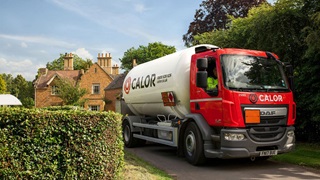
From cooking and heating to transport fuel and industrial use, LPG does it all

LPG stands for Liquefied Petroleum Gas, a by-product from the processing of natural gas liquids and the refining of crude oil. LPG used to be burned off and wasted but is now valued globally as a versatile, clean, low carbon energy source. Calor gas is LPG. LPG starts life as a gas but changes to a liquid when cooled. This property means it can be easily stored in bulk tanks or portable cylinders to provide energy wherever needed. As the cleanest fossil fuel, LPG is a safe, convenient energy source that can be used in over a thousand different ways.
Liquefied Petroleum Gas is a blanket term for propane and butane gas. Often, propane (C3H8) and butane (C₄H₁₀) are mixed to get the best energy yields and combination of properties. The two are chemically quite similar but small differences in their properties mean each is best suited to specific tasks. Propane has a lower boiling point than butane at -42°C vs -0.4°, which makes propane a better choice for cold climates. Butane has a lower vapour pressure, which makes it an effective propellant.
Did you know Calor offers an even more sustainable energy than LPG? BioLPG is exclusively available in Ireland from Calor and is perfect for homes and businesses. Calor's BioLPG is made from a blend of waste, residues and sustainably sourced materials. A like-for-like replacement for LPG, it gives the same great performance and is used in the same way. All that changes is your carbon footprint. BioLPG is exclusively available in Ireland from Calor and is perfect for homes and businesses.


LPG brings the benefits of gas to homes and businesses where mains gas isn’t an option. It’s better for the environment than coal and oil, convenient and cheaper to install than electricity, oil and air source heat pumps.
BioLPG is called a ‘drop-in’ fuel because it’s a completely interchangeable substitute for conventional LPG. No infrastructure changes are needed to household appliances or industrial machinery – you simply ‘drop it in’. It gives the same performance but can cut greenhouse gas emissions by 86%!1
1 Source: Compared with oil: BEIS 2021